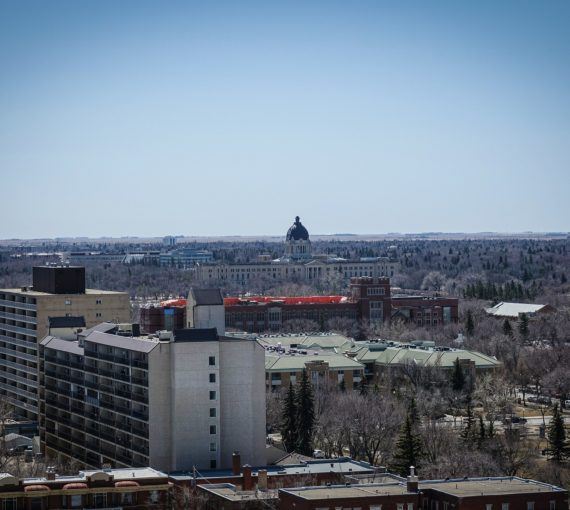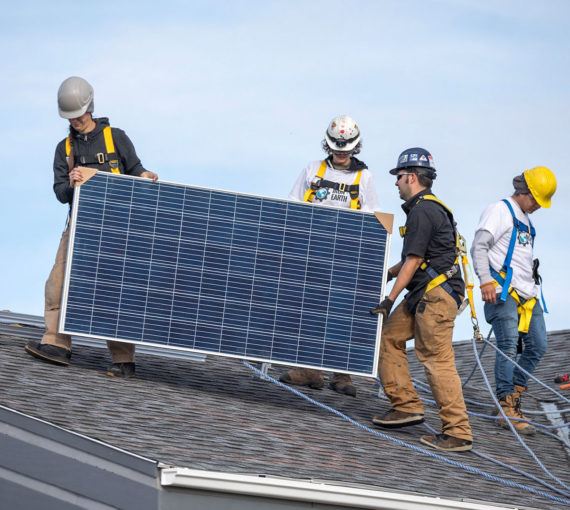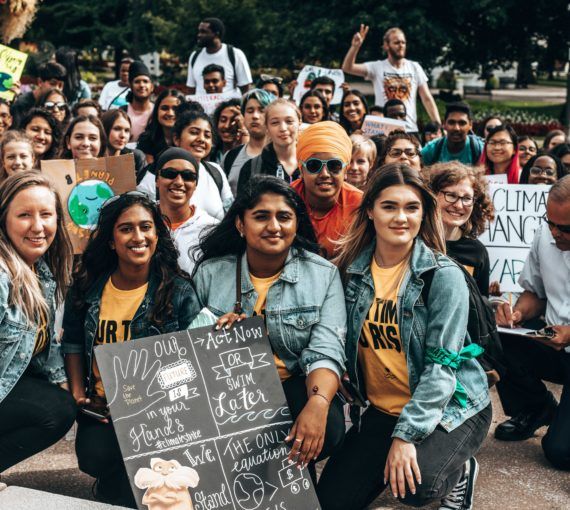
If you want to help your local government take action on climate change, it’s important to understand your local climate plan. (Photo: Rachelle Delaney)
Climate action plans can seem overwhelming at first glance. They’re often packed with details and language that aren’t accessible to the average person.
This mini-guide should help you understand the most important parts of your local government’s climate plan and determine how effective it is. Once you understand your local plan, you’ll be better prepared to talk to your local representatives about taking climate action.
In general, there are two types of climate plans: mitigation plans and adaptation plans. Mitigation plans detail how greenhouse gas emissions can be reduced over time while adaptation plans explain how a community will adapt to some of the effects of a changing climate. This guide focuses on climate mitigation plans.
How to access your local climate plan
Climate plans can usually be found on a municipal government’s website. Try searching for “climate change” or “climate plan.” Sometimes climate plans are included in broader municipal initiatives, so searching for terms like “sustainability,” “emissions,” “clean” or “green” might also lead you to the right place. If you can’t find the plan online, phone or email your municipal councillor to ask if they can direct you.
You can also contact the staff responsible for your municipality’s work on climate change. Look for job titles such as climate change specialist, sustainability planner, energy and environment director or climate manager.
It’s important to build relationships early on with these key staff members and your elected councillor. Check out our guide for working with municipal councillors and staff for more information on that.
What to look for in a climate plan
It’s easy to get lost in the details of a climate plan. We recommend focusing on four main elements:
- The plan’s focus on equity
- Ambitious targets based on up-to-date science
- Actions that add up to meet the targets
- Ways for residents like you to monitor the government’s progress and success
1. A focus on equity
Until recently, most municipal governments have neglected to address equity issues in their climate plans, and many still do. We have a lot of work to do to ensure underserved communities — including Indigenous Peoples, racialized communities, newcomers to Canada, people with disabilities and low-income people — benefit from the transition to a low-carbon society and are meaningfully involved in decision-making. Governments at all levels must ensure their climate plans benefit everyone and don’t burden people who are already struggling.

Putting equity into action in Regina
A 2019 report by researchers at the University of Regina and the Canadian Centre for Policy Alternatives surveyed equity issues in Regina and offered recommendations for the city’s Energy and Sustainability Strategy. These included establishing official committees on equity issues and a just transition, and ensuring these committees include people with the lived experience of marginalization to inform the planning process.
Every municipality in Canada sits on the traditional territories of Indigenous Peoples. Your local government must ensure the measures and solutions detailed in its climate plan specifically benefit Indigenous communities. These communities should be involved from the beginning of the process and have meaningful opportunities to influence the development and implementation of a climate plan.
Your local climate plan should also address issues of energy poverty, insufficient housing, unaffordable, unsafe or inaccessible transit options, environmental racism, underemployment, lack of access to financial supports and lack of green spaces in marginalized communities. Look for specific structures, committees, supports and plans that address these equity, justice and accessibility issues.
Implementing an ambitious climate plan will inevitably lead to the creation of new jobs and the growth of industries that support the energy transition. However, there will also be big changes for workers transitioning away from high-carbon industries toward new energy sectors. A climate plan should include specific supports for job creation and training for workers, especially if the municipality relies on the fossil fuel sector or other high-polluting sectors for employment.

What is energy poverty?
The Canadian Urban Sustainability Practitioners define energy poverty as “the experience of households or communities that struggle to heat and cool their homes and power their lights and appliances.” The average Canadian household spends less than three per cent of its income on home energy needs. Households that spend more than twice this amount on home energy services are said to experience energy poverty.
2. Ambitious targets based on up-to-date science
The science behind climate change is clear, and our emission reductions targets must reflect current findings. If your municipal climate plan was released before the IPCC published its landmark report in 2018, it likely needs updating.
What is an ambitious target for emission reductions and how do you know if your local government’s target is ambitious enough? That will depend on a number of factors, but in general, if we want to stay below 1.5 C of warming, we need to reduce emissions by 50 per cent below 2005 levels by 2030 and achieve zero emissions by 2050.
3. Concrete actions that will achieve the set targets
A climate plan must include specific, concrete actions that will reduce emissions, and the reductions resulting from those actions must collectively add up to the plan’s overall target.
For example, Halifax’s climate action plan states that deep-energy retrofits of 100 per cent of residential building stock by 2040 will result in the reduction of 910 kt CO2e of annual emissions. (CO2e, or carbon dioxide equivalent, is a way to express the global warming potential of various greenhouse gases in terms of an equivalent potential of carbon dioxide.)
The plan should address all sectors the municipality can control, both fully and partially.
While it’s impossible to prescribe a list of actions that will work for every municipality, all climate plans should include some major action categories.
4. Ways for residents to monitor progress
Current and future governments must be held accountable for implementing a climate plan and making sure it works. Your local plan should clearly explain how you as a resident can monitor the government’s progress toward its goals. Governments should commit to regular, public reporting on progress. Look for details on how it will:
- Monitor and report on emissions reductions each year
- Establish short-term targets every five years or less
- Evaluate the successes of each program and policy in the plan
A good climate plan must have strong financial support and adequate resources. Look for an explanation of how various departments — from planning, public works and infrastructure to finance, emergency preparedness and municipal waste management — will work with council to implement the plan.
Work with your local government on climate action
This resource is part of Your voice at the table: A guide to mobilizing local government climate action. Learn to work with your local government so you can build a healthy, sustainable, resilient future together.



